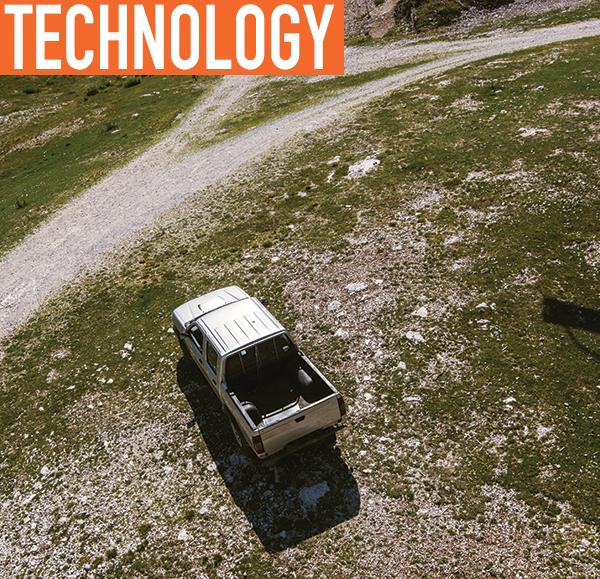Imagine you’re a short-haul fleet manager working in a metropolitan area with drivers dispatched throughout the region. One driver is in a residential area with tight, winding roads, and another is stuck in traffic with a quickly approaching delivery window. Then you receive a call from a customer looking for a delivery as soon as possible. How can you find where your drivers are located, reroute them to new, faster roads, and identify who is available to deliver the customer’s order on time?
Short-haul fleets face challenges because they frequently travel to new locations and delivery spots. Executives and fleet managers looking to improve dynamic dispatching and routing for these fleets are turning to GPS tracking technology as a more precise, data-driven way to see where drivers are at any given moment. They also use this technology to monitor conditions on the road in real time. Telematics allows managers to quickly plan routes, dispatch drivers, and efficiently reroute drivers, all while managing customer expectations and ensuring drivers are exhibiting safe behaviors.
DYNAMIC ROUTING
Dynamic routing is complex for short-haul fleets, beginning with route planning and driver dispatch. Many short-haul drivers are locals who benefit from having prior knowledge of the area, including roads and traffic patterns. But as fleet managers look to accurately identify the fastest, most efficient route to a driver’s destination, telematics considers outside influences in real time that drivers may not be aware of, such as heavy traffic, road hazards, or construction.
Vehicle tracking also gives fleet managers visibility into what every vehicle in their fleet is doing from moment to moment, including idling. Collecting data like travel distance, average speed, and fuel use directly from the vehicles means managers have a full picture into fuel usage and vehicle inefficiencies. This allows them to coach drivers for unsafe practices contributing to excessive (and costly) fuel use. Having a full picture of vehicle status also helps managers understand usage patterns and determine whether assets are over or underused, improving fleet productivity and the bottom line.
From a compliance perspective, for those fleets operating within the requirements of the ELD mandate set by the Federal Motor Carrier Safety Administration (FMCSA), an integrated ELD solution with GPS tracking offers full compliance with Hours of Service (HOS) requirements with elogs, making it easier for drivers and fleet managers to track hours and obey all regulations. With full insight into driver hours, dispatchers can make informed decisions about assigning jobs to drivers and ensure assets are used efficiently to save time and money.
THE BEST WAY
Since short-haul drivers get dispatched to new delivery spots every day, they’re constantly facing new routes and changing road conditions. Managers must supervise these conditions while considering the set customer delivery window and the importance of providing excellent customer service through timely deliveries. If a customer reaches out with an urgent request that requires fast delivery, it’s up to the fleet manager to identify the exact location of assets at any given second and determine how close the driver is to pick-up and delivery sites. The manager should also know whether the driver has the bandwidth to fulfill the order.
Dispatchers using fleet tracking technology receive real time insights into traffic, so they can direct drivers to faster routes or recommend roads not bottlenecked with traffic at a moment’s notice. By optimizing resources and completing jobs quickly, technology helps managers build a strong customer service record; it also helps free up drivers to complete additional orders, both of which boost the fleet’s reputation and bottom line.
SMART MEETS SAFE
Another important consideration when thinking about dynamic routing is safety. Drivers face increased pressures when driving short-haul vehicles, including tight schedules and delivery windows, which can worsen with thick traffic or poor weather. At the same time, as drivers travel through residential areas and near schools and parks, safety becomes even more important as they encounter families, children, and pets. Drivers, of course, want to keep themselves and others safe, but fleet managers can use technology to ensure drivers are taking the correct precautions and following specific protocols for driving in residential areas.
Vehicle tracking technology installed in trucks allows fleet managers to identify unsafe behaviors—such as speeding, harsh braking, and cornering—in real time, grade drivers on performance, and use scorecards to coach better behavior. When pin-pointing specific behaviors, managers have an actionable, data-driven way to view trends across the entire fleet to assess behavior and provide more targeted driver coaching going forward. If drivers exceed maximum posted speeds in residential areas, blow through red lights or stop signs, or take corners too fast, managers can provide individualized coaching to correct these behaviors, making the roads safer for everyone.
As short-haul fleets navigate the complexities of planning routes, dispatching and rerouting drivers, and meeting customer demands, technology solutions like telematics give fleet managers a faster, more flexible way to meet these challenges with full insight into their fleet. Pairing data from GPS tracking systems with insights from local drivers makes it easier to complete client orders, improving customer success and a company’s bottom line.
ABOUT THE AUTHOR
Ozzie Flores is a product manager at Teletrac Navman, a fleet management solutions software company. Teletrac Navman provides you with the data to stay on schedule, reduce costs, and put your team and vehicles to work every day. Find out more, visit www.teletracnavman.com.
MODERN WORKTRUCK SOLUTIONS: JUNE 2018 ISSUE
Did you enjoy this article?
Subscribe to the FREE Digital Edition of Modern WorkTruck Solutions magazine.
![]()





